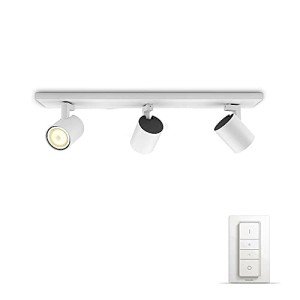Industrial Lamps in the UK: Illuminating Industries and Workspaces
In an era where efficient lighting solutions play a critical function in enhancing efficiency and safety in different industrial settings, industrial lamps have actually become important tools for factories, warehouses, workshops, and more. The UK's market for industrial lighting is rapidly developing, driven by improvements in technology, a growing concentrate on energy performance, and strict safety guidelines. click homepage explores the various kinds of industrial lamps available in the UK, their applications, and the considerations that must be made when picking the appropriate lighting options for industrial environments.
Comprehending Industrial Lamps
Industrial lamps are developed specifically for usage in a variety of industrial settings. They provide the needed illumination while also considering the distinct challenges positioned by such environments, consisting of dust, moisture, high ceilings, and variable temperature levels. Industrial lamps come in numerous types, consisting of LED, fluorescent, and metal halide lighting, each with its own set of characteristics and advantages.
Types of Industrial Lamps
LED Industrial Lamps:
- Description: LED (Light Emitting Diode) industrial lamps are energy-efficient, long-lasting, and supply excellent lighting.
- Benefits:
- Energy effectiveness (as much as 80% less energy intake)
- Long life expectancy (as much as 50,000 hours)
- Low heat emission
- Instantaneous brightness with no flickering
- Applications: Factories, storage facilities, and building sites.
Fluorescent Industrial Lamps:
- Description: These lamps produce light through the excitation of gas, frequently used in environments needing consistent lighting.
- Benefits:
- Good color rendering
- Economical
- Different sizes and shapes
- Applications: Workshops, garages, and assembly lines.
Metal Halide Industrial Lamps:
- Description: This kind of gas discharge lamp produces a bright, white light and is typically utilized in big areas.
- Advantages:
- High intensity and brightness
- Excellent for sports locations, car park, and large industrial facilities
- Applications: Warehouses, loading docks, and outdoor locations.
Comparison Table of Different Types of Industrial Lamps
| Lamp Type | Energy Efficiency | Lifespan | Brightness | Application Areas |
|---|---|---|---|---|
| LED Industrial Lamps | As much as 80% | Up to 50,000 hours | Extremely High | Factories, Construction Sites |
| Fluorescent | Moderate | 7,000 - 15,000 hours | Moderate to High | Workshops, Garages |
| Metal Halide | Moderate | 15,000-20,000 hours | High | Warehouses, Outdoor Areas |
Selecting Industrial Lamps
When picking industrial lamps, numerous aspects must be thought about. These include:
- Type of Application: Different locations have varying lighting needs. For example, high-precision jobs might need brighter, more focused lighting compared to basic work area illumination.
- Energy Efficiency: With increasing energy expenses and ecological issues, picking lamps with high energy efficiency can cause considerable cost savings with time.
- Life-span: Longer-lasting lamps decrease upkeep expenses and downtime, making them more suitable in hectic industrial settings.
- Safety Standards: Compliance with security guidelines is important. Industrial lamps need to be developed to hold up against extreme conditions, including wetness, dust, and effects.
- Cost: While upfront expenses matter, the long-lasting cost savings accomplished through energy-efficient and long-lasting lamps should also be taken into account.
Benefits of Appropriate Industrial Lighting
- Enhanced Safety: Proper lighting decreases the danger of accidents and injuries in industrial environments.
- Increased Productivity: Adequate lighting promotes better presence, helping in the performance of employees.
- Cost Savings: Energy-efficient lamps lead to lower electrical energy costs and less regular replacements.
- Enhanced Quality Control: Good lighting allows for better assessment procedures, ultimately improving product quality.
Regularly Asked Questions (FAQs)
Q1. How do I determine the best type of industrial lamp for my center?A1. Evaluate the specific lighting needs and conditions of your center. Think about elements such as the jobs being carried out, the size of the space, and any regulatory requirements.
Q2. Are LED lights worth the investment in an industrial setting?A2. Yes, LED lights use significant long-term savings due to lower energy consumption and longer lifespans, making them a cost-efficient alternative in the long run.
Q3. Can I set up industrial lamps myself?A3. While some individuals might have the abilities to install lamps, it is frequently recommended to work with a certified electrical contractor to make sure compliance with safety standards and regional policies.
Q4. What upkeep is needed for industrial lamps?A4. Regular assessments for damage, cleansing of light fixtures, and timely replacement of defective lamps are important to preserve optimal efficiency.
Q5. What are the most recent trends in industrial lighting innovation?A5. Advances in smart lighting systems, including IoT (Internet of Things) integration and sophisticated energy management solutions, are at the leading edge of industrial lighting innovation.
The right industrial lamps are crucial to ensuring security, performance, and expense performance in different industrial settings. The UK market offers a variety of lighting options, from LED lamps to fluorescent and metal halide options, each ideal for different applications. By understanding the functions and advantages of these lighting types and taking essential considerations into account, companies can make educated decisions that will illuminate their work spaces successfully while optimizing efficiency and conserving expenses. Investing in the best industrial lighting not only boosts overall ambiance but also cultivates a much safer and more efficient work environment.

